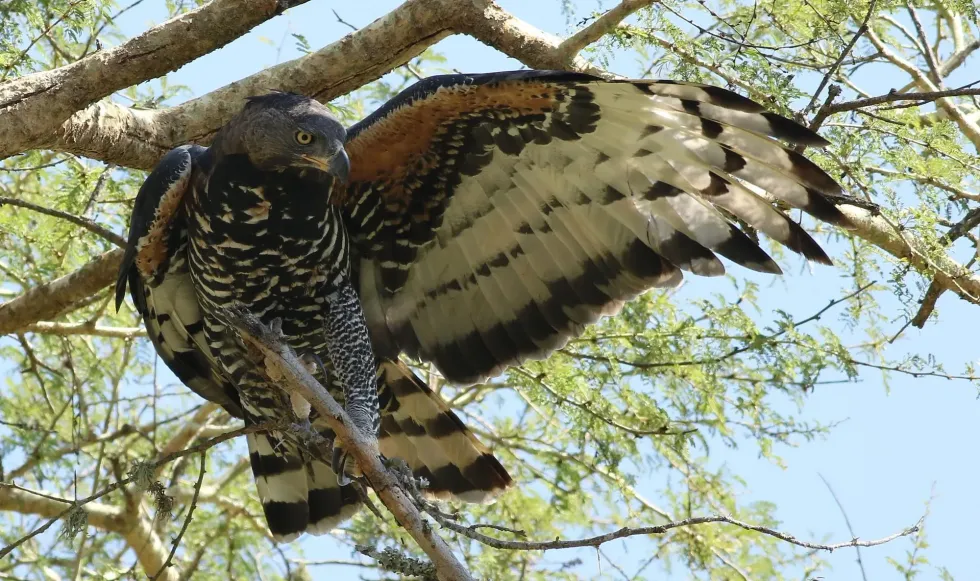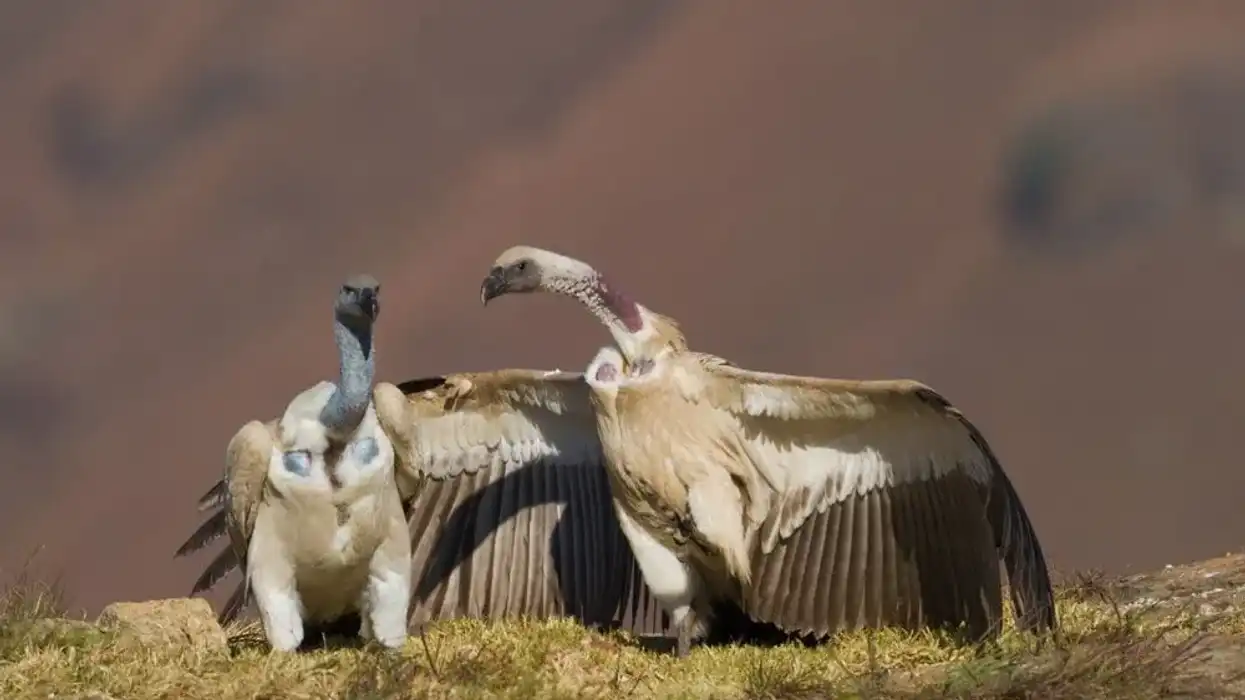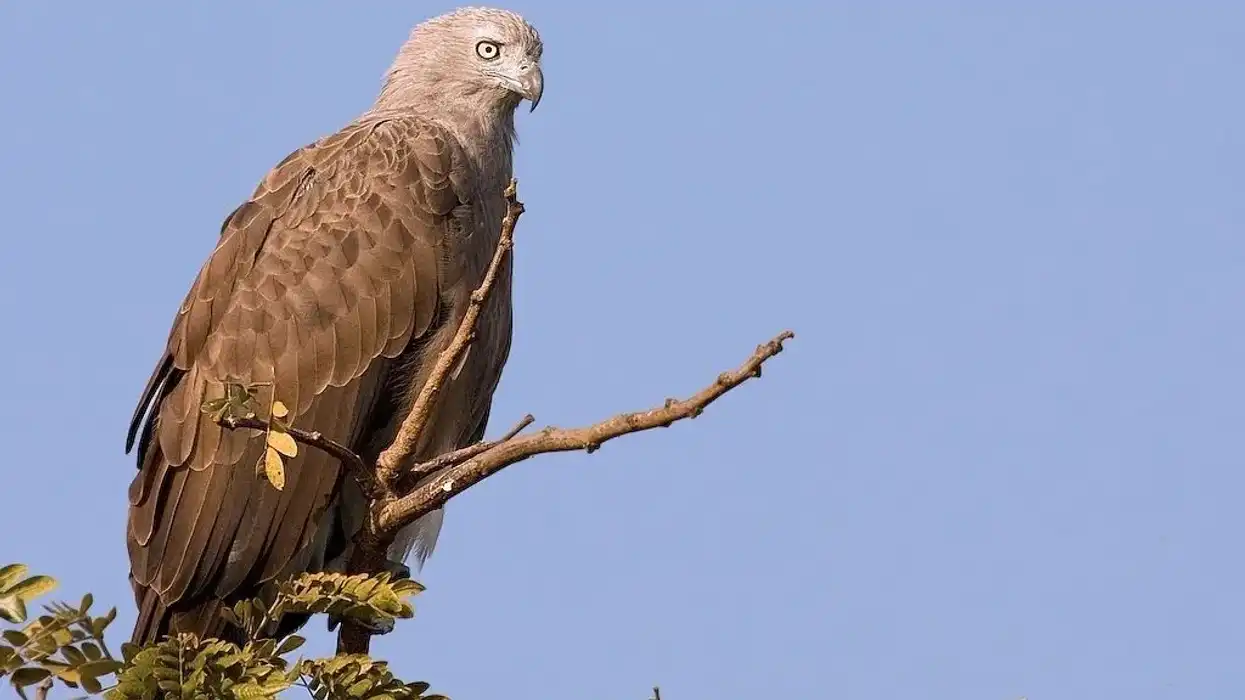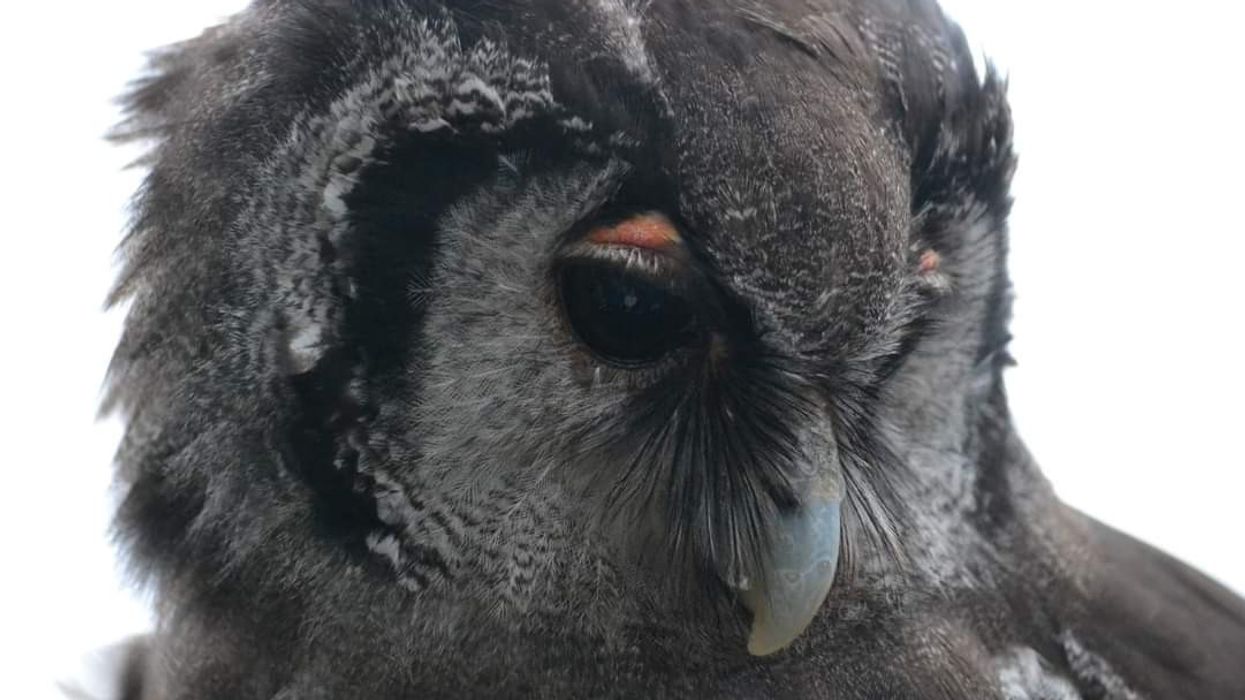The Malagasy crowned eagle used to be a big and beautiful bird of prey in Madagascar and has been extinct since the 16th century.
This extraordinary eagle, also called Madagascar crowned hawk eagle, is thought to have been even larger than the only other surviving member of its genus, the African crowned eagle. Not much is known about this species of birds, as their subfossils were only recovered in 1994 by Steven M. Goodman at Ampasambazimba in Madagascar.
The specific epithet given to this species, mahery, comes from the Malagasy word meaning powerful.
This name was given to these birds because of the strength they are presumed to have had before they went extinct.
Both the members of its genus Stephanoaetus, the other being the African crowned eagle, are known for viciously swooping in and attacking their prey with the long and sharp talons located on their back toes.
The Malagasy crowned eagles would have had the ability to puncture the heart of their prey with its hind talons or even knock them unconscious.
Here are some interesting facts about this big bird of prey found in Madagascar more than 2,600 years ago!
If you want to know more about other raptors, check out our black vulture facts and common buzzard facts pages.
Malagasy Crowned Eagle Interesting Facts
What type of animal is a Malagasy crowned eagle?
The Malagasy crowned eagle used to be a type of bird.
What class of animal does a Malagasy crowned eagle belong to?
The Malagasy crowned eagle (Stephanoaetus mahery) belonged to the class Aves, and order Accipitriformes, which consists of birds of prey such as hawks, eagles, and vultures.
How many Malagasy crowned eagles are there in the world?
The Malagasy crown eagles went extinct in the 16th century, just 1,000 years after humans arrived in Madagascar.
Where does a Malagasy crowned eagle live?
The Malagasy crowned eagle is thought to have been endemic to Madagascar, which means that it was only found in the forests of Madagascar and nowhere else in the world.
What is a Malagasy crowned eagle's habitat?
This species is presumed to have lived in a dense forest or rainforest habitat, grasslands, and woodlands of Madagascar.
Who does Malagasy crowned eagle live with?
Not much is known about the social structure of the Malagasy crown eagles, but the African crowned eagle is the most closely related bird to the Malagasy crowned eagle, and it is known to live either alone or hunt in pairs.
How long does a Malagasy crowned eagle live?
The exact lifespan of these birds cannot be known as they have become extinct in their range thousands of years ago.
How do they reproduce?
The Malagasy crowned eagles showed sexual dimorphism concerning their size. The female bird was usually bigger in size and weight than its male counterpart.
Much of the actual reproduction process of these raptors is unknown but can be figured out from how the African crowned eagle reproduces, which consists of the male bird performing a dance, of sorts, to impress the female bird.
After mating, the female lays one or two eggs. When these eggs are hatched, the stronger chick soon kills the weaker chick, and both the male and female eagles take care of the chick and protect it from any danger.
What is their conservation status?
These eagles do not have a conservation status as they have become extinct within their range and are not found anywhere in the world.
Malagasy Crowned Eagle Fun Facts
What does the Malagasy crowned eagle look like?
Much of the physical appearance of the Madagascar crowned hawk-eagle cannot be described because of a lack of data and research. However, this bird is presumed to have strong legs, a relatively big wingspan of 59-79 in (1.5-2 m).
They would have had a 'crown' of feathers on their foreheads, which on the African crowned eagles, consist of a crest of dark feathers with white tips. They also had a strong hind talon, which they would have used to hunt.

*Please note that this is an image of the golden eagle, a species thought to be similar in size to the Malagasy crowned eagle. If you have an image of the Malagasy crowned eagle, please let us know at hello@kidadl.com.
How cute are they?
This bird of prey, like most of its kind, could have looked more intimidating and gruesome than cute, though its presumed size and beauty have to be given due appreciation.
How do they communicate?
There is no data available about how Madagascar crowned hawk eagle would communicate with others, but similar species are known to have a high-pitched screeching sound that they use to call out to their families.
How big is a Malagasy crowned eagle?
The Malagasy crowned eagle is considered to have been a huge bird. The female bird was found to be bigger than the male bird. Their height has been estimated at 45.2 in (115 cm), and research has shown that they were more or less the same size as a golden eagle.
How fast can a Malagasy crowned eagle fly?
The speed with which Malagasy crowned eagles used to fly over or in forests is not known.
How much does a Malagasy crowned eagle weigh?
The largest specimen found of a female Malagasy crowned eagle was estimated to have a weight of 15 lb (7 kg).
What are the male and female names of the species?
There are no sex-specific names for the males and females of this species.
What would you call a baby Malagasy crowned eagle?
A baby Malagasy crowned eagle would have been called a chick, and a juvenile when they were growing up but had not matured yet.
What do they eat?
The diet of these birds of prey would have been carnivorous. It was found that this species mainly relied on giant lemurs for a big part of their diet.
Are they dangerous?
Though not much information is available about Madagascar crowned hawk eagle, there has been proof found that some other similar species have hunted human babies occasionally. These kinds of raptors are of no danger to human beings now as most of those species have gone extinct or are under protection.
Would they make a good pet?
It is unclear whether this raptor species would have been able to be a pet but if they existed today, it would not have been a good idea given their possibly aggressive nature. However, living in captivity could have been beneficial to their population and might have saved them from extinction.
Did you know...
Modern-day lemurs are known to be extremely wary and cautious at the slightest sign of raptors being present nearby and call to one another to be cautious as well. After the Malagasy crowned eagle was found, this anti-predator behavior is thought to have evolved in lemurs because of these raptors extensively hunting them for food thousands of years ago.
What is the other name of Malagasy crowned eagles?
The other name for these raptors is Madagascar crowned hawk eagle as they were large forest-dwelling predator species in Madagascar.
How did the Malagasy crowned eagle go extinct?
When humans arrived in Madagascar, they started hunting giant lemurs for their own use, and eventually hunted them to extinction. Thus, the population of this raptor bird, dependent on the giant lemur for its food, also died out in its range as a result of the loss of food sources.
Here at Kidadl, we have carefully created lots of interesting family-friendly animal facts for everyone to discover! To know more about other birds, check out our tawny eagle facts and martial eagle facts pages.
You can even occupy yourself at home by coloring in one of our free printable Malagasy crowned eagle coloring pages.









